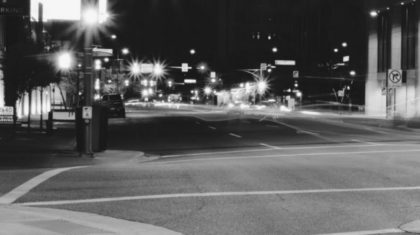
It’s the holidays, which means less daylight, poor visibility, and cranky drivers hurrying to or from the chaos of the major retail areas — a bad cocktail for the bundled pedestrians and wind-chilled bicyclists braving the streets. So, instead of just saying, “Be careful out there!” and sending you off with a hearty pat on the back and wishful thinking, we thought you might need some information on what to do if you find yourself witnessing or, worse, a victim of a collision.
Information courtesy of Sarah Fine
Most states recommend the same steps following a bicycle or pedestrian collision:
- First, check for injuries. Call 911. If you are trained, administer first aid.
- When/if it is safe to do so, move everyone out of harm’s way.
- Then, gather information.
- Ask the driver(s) for name and address, vehicle registration number, driver’s license number, and insurance policy company and number.
- Ask witnesses for names and phone numbers.
Here are some additional considerations to keep in mind:
- Severe injuries are not always visible. If you witness a bicycle or pedestrian collision, urge the victim to receive medical attention and report the collision even if they claim they are not in pain.
- Why report the collision if everyone seems okay? Crash reports help make walking and bicycling safer. Planners need accurate crash statistics to help make streets and intersections safer, and crash reports only get generated by law enforcement officers.
- So, if you witness a bicycle or pedestrian collision, stay at the scene until law enforcement arrives. Tell other witnesses to remain at the scene, too. Help make sure that crash report gets completed.
- While you wait, write down what you saw as best as you can. Use objective terms. Don’t discuss whose fault the collision was.
- If you are a witness, make sure law enforcement records your statement and information. Confirm that statement matches what you reported and confirm that your contact information is recorded.
More things to keep in mind if you are the victim:
- If you are not hurt, make sure you get witnesses’ information. Confirm that the police have recorded it in their report. Keep a record of the witnesses for yourself; you may need their contact information for an insurance inquiry.
- In addition to the drivers’ information, make sure you record the
- Make, model, and license plate of the vehicle(s) involved in the collision.
- Name and badge number of attending law enforcement officer
- Police report number
- Document. Photograph injuries to yourself and your property. If you seek medical attention later, retain the report. If you were bicycling, take your bike to a mechanic and ask for a repair estimate. You may be surprised at how much invisible but crucial damage your bike has sustained. If you can afford to get your bike repaired, save the receipt for insurance claims.
- If you did not immediately report the collision, know that many states have monetary or time-sensitive reporting thresholds which may inhibit your ability to report a collision after the fact. In Oregon, for example, DMV accident reports must be completed within 72 hours and are only processed “in case of property damage over $1,500 or injury to a person.” (www.odot.state.or.us/forms/dmv/32.pdf)
Other resources:
Things to keep in your back pocket
- Bike crash app (New York Bike Lawyers)
- Bike crash app (Washington Area Bicyclist Association)
- Bike crash report card (BikeSafe Boston)
- Bike crash report card (Washington Area Bicycling Association)
For when you get home
For further reading


